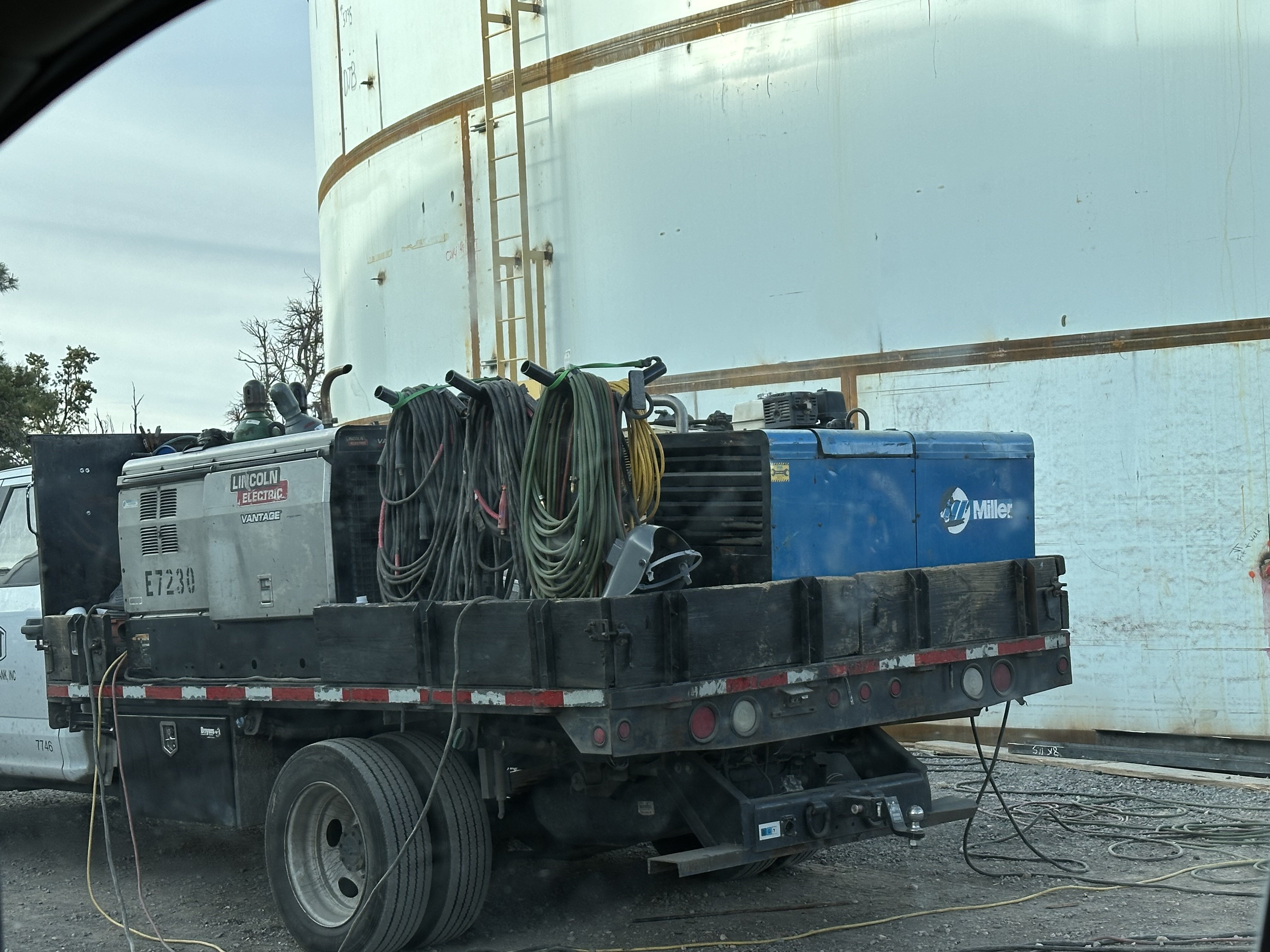Finest Practices for Effective Tank Welding Inspection Processes

Understanding the Importance of Rigorous Tank Welding Assessment Processes in Fighting Failures and Enhancing Life-span
In the realm of industrial operations, the value of strenuous tank welding inspection procedures can not be overemphasized. By executing various evaluation approaches, organizations can find problems early, consequently preventing expensive consequences and prolonging the life of their storage tanks.
Significance of Welding Inspections
Acknowledging the vital function of welding evaluations in maintaining structural honesty, these procedures make sure that welds satisfy recognized criteria and specs - Tank Welding Inspection. Efficient welding evaluations are critical in the building and upkeep of storage tanks, as they straight impact the sturdiness and safety and security of the structures. By recognizing prospective shortages, such as improper methods or product defects, evaluations mitigate the threat of disastrous failings
Welding inspections incorporate various methods, including visual evaluations, non-destructive screening (NDT), and assessments of welding procedures. Each approach serves to verify the top quality and compliance of welds with sector guidelines, thereby securing both personnel and ecological interests. Normal evaluations cultivate a culture of responsibility and quality within the workforce, making sure that all group members stick to ideal practices.
Additionally, these inspections contribute to the total lifecycle monitoring of tanks by identifying wear or deterioration early while doing so. By attending to these concerns proactively, companies can extend the operational lifespan of their properties, eventually bring about cost financial savings and boosted reliability. In summary, the relevance of welding inspections can not be overstated; they are vital for making certain safety, longevity, and compliance in storage tank building and construction and maintenance.
Usual Sources Of Container Failings
Recognizing the usual sources of container failings is crucial for protecting against catastrophic incidents and ensuring the long life of storage space systems. One widespread root cause of storage tank failure is corrosion, which can substantially compromise the structural integrity of tanks in time. Environmental variables, such as direct exposure to dampness, chemicals, and temperature level fluctuations, can accelerate this procedure.
An additional critical factor is improper welding techniques, which might bring about problems like cracks or insufficient joints. These problems can compromise the container's stamina and cause leaks or ruptures. Additionally, poor upkeep techniques can cause undetected wear and tear, inevitably increasing the threat of failing.
Layout defects, including poor density or poor product selection, can likewise add to storage tank vulnerabilities. Furthermore, functional elements, such as overfilling or exposure to extreme stress, can strain the storage tank past its desired limitations.
Secret Inspection Methods
Reliable inspection methods play a vital duty in mitigating the threats linked with tank failings. An extensive strategy to container welding inspection involves check out this site numerous crucial techniques, each created to determine potential problems and make sure structural honesty.
Aesthetic assessment stays the initial line of protection, enabling assessors to identify surface area anomalies such as fractures, deterioration, or misalignment. This strategy is often supplemented by non-destructive testing (NDT) approaches, which are important for evaluating weld high quality without jeopardizing the tank's honesty.

Additionally, magnetic fragment testing (MPT) and dye penetrant testing (DPT) work for discovering surface area defects in ferromagnetic materials and non-porous surfaces, respectively. Each strategy has its toughness and limitations; for that reason, a mix of methods is often utilized to achieve comprehensive assessment results.
Benefits of Extensive Assessments
While the immediate prices of extensive examinations may seem daunting, the lasting advantages considerably exceed these first investments. Implementing comprehensive evaluation refines not just improves the integrity and safety of storage tank structures yet likewise lessens the threat of tragic failings that can lead to considerable economic losses and environmental harm.
Strenuous evaluations help recognize possible concerns early in browse around these guys the welding procedure, enabling prompt corrective activities that prevent pricey repair services or substitutes down the line. This aggressive approach cultivates a society of quality control, where adherence to best methods comes to be this link ingrained in operational treatments. Furthermore, routine evaluations add to increased possession durability, as they guarantee that storage tanks continue to be in optimum condition throughout their life expectancy.
In addition, the documentation generated from these evaluations works as a valuable source for upkeep planning and efficiency evaluations. This data-driven approach can also boost functional performance, causing minimized downtime and enhanced efficiency. Inevitably, extensive assessments not only safeguard the structural stability of storage tanks however also give considerable economic advantages, strengthening the concept that spending in quality control is a wise decision for any kind of company involved in tank operations.
Regulative Requirements and Compliance
Governing criteria and compliance are important parts of storage tank welding assessment procedures, as they develop the structure for making certain security and quality in operations. Compliance with these standards not only minimizes dangers but also boosts the overall honesty of bonded frameworks. Numerous organizations, consisting of the American Society of Mechanical Engineers (ASME) and the American Oil Institute (API), provide guidelines that dictate appropriate methods for welding, inspection, and screening.
These standards mandate using certified personnel, the implementation of rigorous inspection protocols, and adherence to certain welding treatments. By lining up with governing requirements, organizations can ensure that their containers fulfill the necessary safety and security and performance standards, therefore minimizing the chance of devastating failings that can result in significant monetary losses and ecological damage.

In addition, regulatory compliance fosters a society of responsibility and continuous renovation within the welding and fabrication sectors (Tank Welding Inspection). Regular audits and evaluations guarantee that practices remain aligned with evolving criteria, therefore advertising long-lasting integrity and functional performance. Ultimately, adherence to governing requirements not just secures assets yet also improves the lifespan of welded tanks, guaranteeing they offer their designated function properly with time
Conclusion
In final thought, extensive container welding assessment processes play a vital role in preventing failings and extending the lifespan of storage structures. By determining potential deficiencies via different inspection techniques, companies can mitigate threats linked with container honesty.